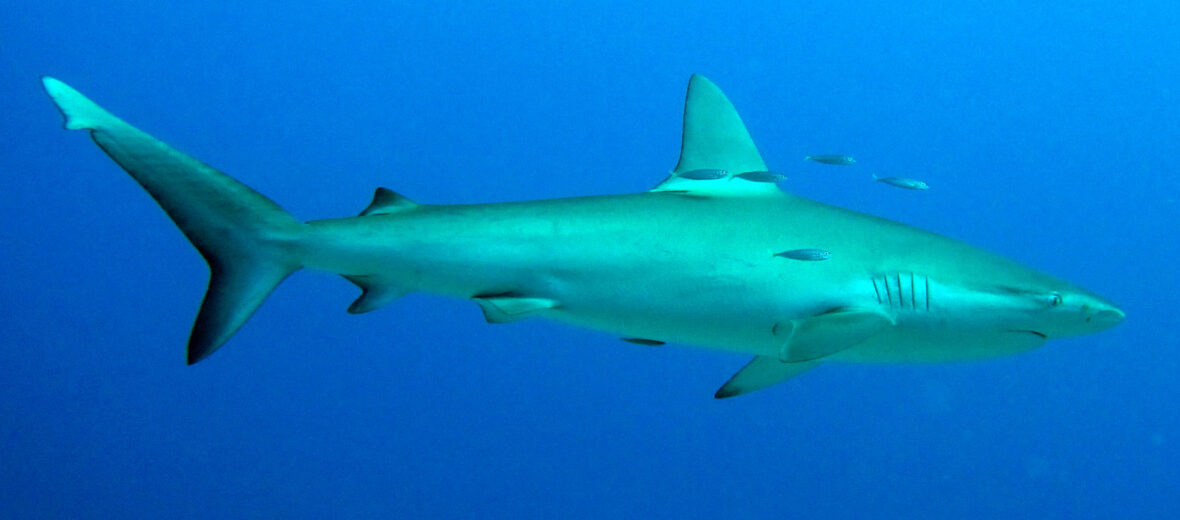
The Galápagos shark is not the most feared shark in the ocean but is still formidable, nonetheless. That being said, sharks aren’t mindless eating machines bent on eating anything that gets in the water with them. There are only around a handful of sharks that are known to be a real hazard to humans, out of around 400+ known species. To put it in perspective, in 2020, there were only 57 confirmed shark attacks, with only a mere 5 – 7 deaths. This is in stark contrast to the 11,400 sharks per hour that humans terminate! The Galápagos shark is listed as Least Concern by the IUCN, due to their stable and global population.
First the Stats…
Scientific name: Carcharhinus galapagensis
Weight: Up to 100+ lbs.
Length: Up to 11 feet
Lifespan: Up to 24 years
Now on to the Facts!
1.) These sharks are benthic feeders that prefer bottom dwelling bony fish and crustaceans. Larger specimens will prey on sea lions and marine iguanas.
2.) When threatened, the Galápagos shark will engage in an exaggerated, rolling-swimming series of movements while arching its back. It then lowers its pectoral fins, puffs out its gills, and gapes its jaw to look more menacing.
3.) When this shark begins to swim in a figure 8 pattern, they are preparing to attack.
4.) As mentioned above, even though this shark is considered dangerous, it rarely attacks divers.
5.) This shark was originally categorized and described as Carcharias galapagensis by Robert Evans Snodgrass and Edmund Heller back in 1905.
But wait, there’s more on the Galápagos shark!
6.) These sharks aren’t only found around the Galápagos islands. They are found in reef environments in the Atlantic and Pacific Oceans.
7.) Females are viviparous (embryos grow inside her oviduct, feeding from a placenta, until they are ready to be born).
Did you know…?
Like other sharks, they can detect blood in a concentration of only 1 part per 1,000,000! That’s equal to 1 teaspoon of blood in a standard-size swimming pool.
8.) The female will birth 4 – 16 pups every 2 – 3 years.
9.) The teeth in their upper jaw are triangular and serrated. The teeth in the bottom jaw are more narrow.
10.) When they eat something indigestible, they simply eject their stomach out through their mouth, rid the object and then pull their stomach back into their body. What other animals can do this? If you guessed frogs and toads, you’re correct!
Now a Short Galápagos Shark Video!
Be sure to share & comment below! Also, check out the Critter Science YouTube channel. Videos added frequently!
Want to suggest a critter for me to write about? Let me know here.



